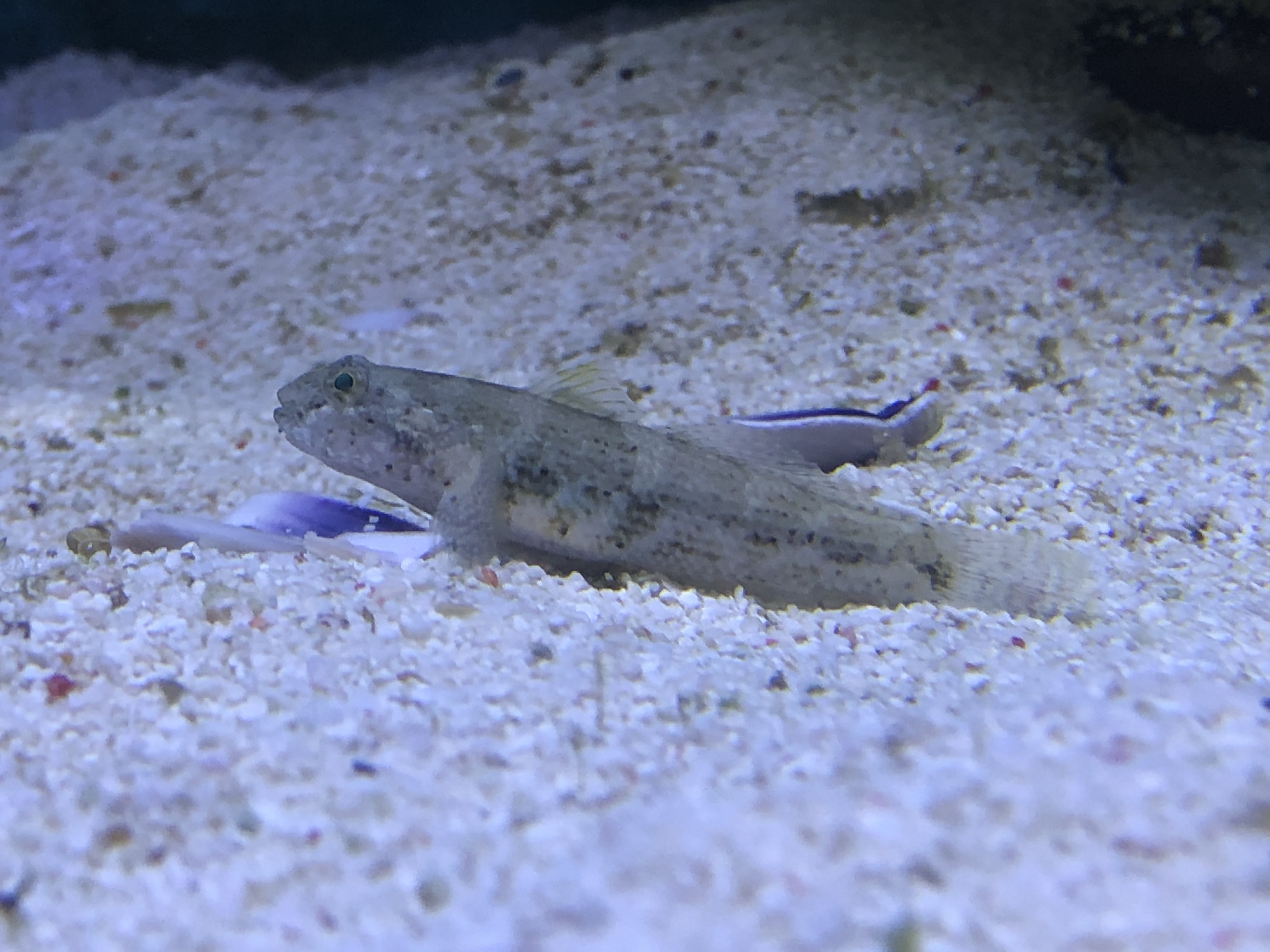
Frayed Fin Goby - Bathygobius krefftii
Our newest additions to the Marine Discovery Centre creature family are two Frayed Fin Gobies. These fish are bottom dwellers and can be found in seagrass beds and shallow sunlit waters of eastern and southern Australia.
They can be recognised by their small size, growing to only around 9 cm in length, as well as their mottled pattern, cup-shaped pelvic fins and frilled pectoral fins which help them to glide along the seafloor. These disc-shaped fins can also act as a sucker when perched on rocks or other substrate. Other Australian goby species can be seen darting around in rockpools along the sandy bottom.
These fish belong to the family Gobiidae, which is the largest family of marine fishes with more than 1700 species representing almost 10% percent of all fish species. There are around 330 described species that can be found in Australian waters. Most of them are relatively small, typically less than 10 cm in length. The goby family includes some of the smallest vertebrates in the world, such as the Midget Dwarf Goby and Dwarf Pygmy Goby, each of which grow only to around 1cm in length. Some large gobies can reach over 30 cm in length, but that is exceptional. Although few are important as food for humans, they are of great significance as prey species for commercially important fish such as cod, haddock, sea bass, and flatfish.
They are abundant worldwide in tropical to temperate marine, estuarine and freshwater environments, mostly on the continental shelf, but also to depths below 1100 m. Some live above the high tide on mudflats, some build elaborate burrows, some live only in caves, others live inside sponges or on corals, and some freshwater species are able to climb waterfalls. On coral reefs, species of gobiids constitute 35% of the total number of fishes and 20% of the species diversity.
Some gobies are hermaphroditic, which means they can change from male to female, or female to male, throughout their life cycle.
Come and look for our Frayed Fin Gobies darting around in one of our temperate tanks, sometimes hiding in burrows under rocks.